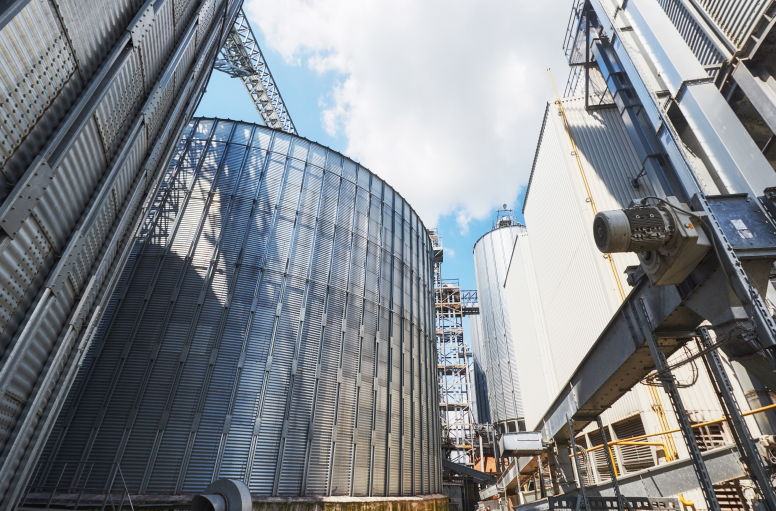Unlock Your Full Potential: Addressing Challenges In Manufacturing Capacity Underutilization

Digging Deep – Manufacturing Capacity Underutilization
Maximizing Manufacturing: Understanding Capacity Utilization
Manufacturing capacity utilization refers to the extent to which a manufacturing plant or facility uses its total production capacity. It is a key performance indicator that measures the efficiency of a manufacturing operation, expressed as a percentage of the total potential output that is being produced.
High capacity utilization indicates that a facility is maximizing its potential output, while low utilization points to unused capacity, which can signal inefficiencies or mismatches between production capabilities and market demand.
Why Measuring Capacity Utilization is Important?
Measuring capacity utilization is crucial for manufacturers as it directly impacts their operational efficiency, cost structure, and profitability.
High utilization rates can lead to economies of scale, reducing per-unit costs and enhancing competitive advantage. Conversely, low utilization rates can indicate overinvestment in capital, underperforming assets, or market misalignment, leading to increased costs and reduced profitability.
It also serves as a vital indicator for strategic decision-making, including investments in new equipment, workforce management, and market expansion strategies.
Industry Insights: Navigating Capacity Utilization Rates
Capacity utilization rates can vary significantly across different industries, influenced by factors such as market demand, production complexity, and sector-specific challenges. According to a report by the Federal Reserve - Industrial Production and Capacity Utilization, the average capacity utilization rate across industries during the period 1997-2022 stood at 79.7%, while for the chemicals industry, in particular, this percentage stood at 78.8% during the pandemic.
- The pharmaceutical industry often experiences high utilization rates, given the consistent demand for healthcare products. However, the industry also experiences high variability in capacity utilization, with rates fluctuating based on drug development cycles, regulatory approvals, and patent expirations.
- The chemical industry, including agrochemicals, sees capacity utilization rates influenced by seasonal demand patterns, seasonality of crops, regulatory changes, and technological advancements. The industry typically shows high to moderate utilization rates. However, environmental regulations and shifts towards sustainable practices can impact these rates.

The Capacity Conundrum – Striking the Perfect Balance
Optimal Capacity Utilization: Importance
Achieving optimal capacity utilization is paramount for manufacturing firms aiming to maximize efficiency and profitability. Optimal utilization ensures that resources are being used effectively, minimizing waste and reducing costs. It also enables manufacturers to respond swiftly to market demands, maintain competitive pricing, and invest in innovation and growth.
Capacity Underutilization: Economic & Operational Implications
Contrary to optimal utilization, underutilization in manufacturing can have significant economic and operational implications for manufacturers, leading to idle manufacturing capacities.
Economically, it can erode profit margins due to fixed costs being spread over a smaller production volume, leading to higher per-unit costs. Operationally, underutilization can indicate excess capacity, inefficiencies in production processes, or misalignment with market demand, necessitating strategic adjustments in operations, marketing, or product development.
In the pharmaceutical sector, underutilization can lead to higher drug production costs, affecting pricing and accessibility. In the agrochemical industry, it can result in supply chain inefficiencies, impacting farmers and food production. Industrial manufacturers facing underutilization might struggle with maintaining profitability and reinvesting in innovation.

Navigating the Challenges – Top Six Reasons for Capacity Underutilization
Lumpy vs. Cyclical Business
In lumpy businesses, demand for products or services occurs in irregular, unpredictable bursts, often leading to significant challenges in capacity planning and utilization. This can often be a major cause of the capacity underutilization of manufacturing plants. Lumpy businesses contrast with cyclical businesses, where demand patterns are more predictable and often tied to economic cycles, allowing for better capacity planning and utilization.
In the pharmaceutical industry, the development and approval of new drugs can lead to lumpy demand. For instance, the sudden approval of a new, highly vital drug can cause a sharp increase in production demand, straining manufacturing capacities that were not designed for such spikes.
An example is the rapid production scale-up required for COVID-19 vaccines, where companies like Pfizer and Moderna had to rapidly adjust their manufacturing strategies to meet global demand, showcasing the challenges of lumpy demand in a high-stakes environment. While a few companies have the resources to handle such a scenario, the majority of them fail to do so.
Global Supply Chain Disruption
The COVID-19 pandemic has underscored the vulnerability of global supply chains, leading to significant disruptions in manufacturing operations worldwide until lately. A survey by the Institute for Supply Management (ISM) in March 2020 revealed that nearly 75% of companies reported supply chain disruptions due to coronavirus-related transportation restrictions. This disruption not only delayed raw material deliveries but also led to increased costs and reduced manufacturing capacity utilization. However, after three years of disruption, the global supply chain is slowly returning to normalcy.
As a leading producer of both active ingredients essential for agrochemical formulations and finished pesticide products, interruption in China's manufacturing output due to supply chain issues had global implications. This posed a considerable challenge for importers of agrochemical raw materials, who rely heavily on these products to meet the agricultural demands of their respective markets.
During the COVID-19 pandemic, India, a major supplier of generic drugs, restricted the export of certain pharmaceuticals to secure domestic supplies. This decision impacted global pharmaceutical supply chains, demonstrating how supply disruptions can lead to significant underutilization in manufacturing plants reliant on these materials. Due to this companies globally faced delays and increased costs, highlighting the need for more resilient supply chain strategies.
Low Capital or Capital Issues
Capital constraints can significantly impact a manufacturing plant's ability to operate at full capacity. Limited access to financing for upgrading equipment or expanding operations can lead to underutilization. A study by Goldman Sachs highlights that small and medium-sized manufacturers often need higher borrowing costs and stricter lending conditions, which can stifle growth and as a result lead to underutilization of existing capacities.
In the agrochemical sector, the development and production of new chemical compounds for fertilizers, pesticides, and herbicides involve extensive research and regulatory approval processes. A lack of sufficient working capital can hinder a company's ability to invest in these critical areas, leading to delays in product development and market entry. For instance, a report by the Federation of Indian Chambers of Commerce & Industry (FICCI) highlighted that small and medium-sized enterprises (SMEs) in the Indian agrochemical sector face significant challenges in accessing finance, which restricts their ability to scale up production and meet market demand efficiently.
Similarly, in the pharmaceutical industry, the process from drug discovery to market launch is highly capital-intensive, often requiring billions of dollars and several years of development. Working capital issues can severely limit a company's ability to sustain long-term research projects, invest in advanced manufacturing technologies, or expand production capacities.
A study by Deloitte on R&D returns for the top 20 bio-pharmaceutical companies underscored the financial challenges faced by the industry, with the cost of developing a new prescription medicine that gains market approval estimated to be as high as $2.2 billion in 2022.
Inefficient Production Process
Inefficiencies in the production process, often due to outdated technology and equipment, can lead to significant underutilization. A report by McKinsey & Company on manufacturing productivity highlighted that the adoption of modern manufacturing technologies could increase productivity by 20-30%. However, many plants continue to rely on outdated equipment, leading to slower production times, higher defect rates, and ultimately, lower capacity utilization.
Let’s take the case of the pharmaceutical industry which faces its unique set of challenges, where the complexity of drug formulation and the process of absolute compliance with safety standards can lead to inefficiencies. A report by the Pharmaceutical Manufacturing Technology Centre (PMTC) in Ireland indicated that typical overall equipment effectiveness (OEE) in the pharmaceutical industry averages around 40%, significantly lower than the benchmark of 85% considered world-class in manufacturing.
In the industrial sector, companies that have not adopted lean manufacturing principles or advanced automation technologies often face inefficiencies. Many mid-sized chemical manufacturers in India struggle with underutilization due to reliance on outdated batch processing techniques. Transitioning to continuous flow manufacturing can help them reduce waste, improve product quality, and increase capacity utilization.
Market Demand Fluctuations
Market demand fluctuations can significantly impact the operational efficiency of manufacturing plants, leading to capacity underutilization. These fluctuations can arise from various factors, including seasonal demand, regulatory changes, and shifts in consumer preferences.
In the agrochemical sector, demand is highly seasonal, with peak periods corresponding to the main planting and harvesting cycles. However, these cycles can vary significantly across different regions and crops, leading to periods of both high demand and significant underutilization.
A study by the Food and Agriculture Organization (FAO) highlighted that the demand for fertilizers, a key segment of the agrochemical industry, can fluctuate by as much as 30-40% within a single year, depending on agricultural cycles and weather conditions. This variability forces manufacturers to scale production up and down, often leading to capacity underutilization during off-peak times.
The pharmaceutical industry faces demand fluctuations due to factors such as drug patent expirations, regulatory approvals, and the emergence of generic alternatives. These elements can lead to sudden spikes or drops in demand for specific medications, challenging manufacturers to adjust their production capacities accordingly.
According to the Centers for Disease Control and Prevention (CDC), the production of flu vaccines was ramped up to approximately 194 million doses globally for the 2020-2021 flu season, reflecting a response to anticipated higher demand due to the COVID-19 pandemic. However, such demand is inconsistent year over year, leading to challenges in capacity planning and utilization.
Regulatory & Environmental Constraints
Regulatory and environmental constraints can also be a leading cause of capacity underutilization. Stricter environmental regulations, while necessary for sustainable operations, can require significant adjustments in manufacturing processes, leading to temporary reductions in capacity utilization. For instance, the small to mid-sized chemical manufacturing industries often face challenges in maintaining full capacity utilization while complying with new environmental standards.
European Union's REACH (Registration, Evaluation, Authorisation, and Restriction of Chemicals) regulation, has compelled many chemical manufacturers to invest in cleaner technologies or reformulate their products to comply with safety standards, temporarily affecting their production capacities.
The agrochemical industry is heavily regulated due to the potential environmental and health impacts of its products. The introduction of stricter EU regulations, such as REACH, led to a significant shift in the industry, with manufacturers needing to invest in cleaner technologies or reformulate their products to meet these new standards. This transition period often results in underutilization as companies adjust their manufacturing processes and product lines.

Elevate Your Output – Tackling Capacity Underutilization
Scaling R&D and Product Innovation
Investing in extensive R&D and scaling the product pipeline is key to staying ahead in competitive manufacturing sectors. Continuous innovation not only leads to the development of new products but also the improvement of production processes and technologies, enhancing efficiency and capacity utilization. In the pharmaceutical industry, for instance, robust R&D efforts are the foundation for developing new drugs and therapies, requiring sophisticated production capabilities and efficient utilization of manufacturing capacities.
Encouraging Right Product Mix
The broad-banding facility is a strategy that allows manufacturing companies that export their products to adjust the types of products they make based on changes in the market. This can empower manufacturers to swiftly adjust their product mix in response to evolving market conditions which is vital in industries like personal care chemicals, where consumer preferences can shift rapidly, necessitating quick changes in production lines to capture emerging market opportunities.
Unlocking Financial Flexibility
To combat capacity underutilization, industries must have easier access to financial resources aligned with their capacity needs. This involves creating specialized financial products and services that cater specifically to the unique demands of different manufacturing sectors. For example, low-interest loans, grants, and investment incentives can be structured to support the expansion, modernization, and efficiency improvements of manufacturing plants, particularly in capital-intensive sectors like pharmaceuticals and agrochemicals.
Streamlining Supply Chain
Manufacturers can significantly improve capacity utilization by streamlining their supply chain for raw materials and other essential inputs. This involves establishing strong relationships with suppliers, adopting just-in-time inventory practices to reduce stockouts and overstocking, and leveraging technology for better supply chain visibility and forecasting. In the agrochemical sector, predictive analytics can help match raw material procurement with seasonal demand cycles, ensuring smooth production processes.
Leveraging Market Research
Conducting thorough market research can uncover untapped opportunities and foster consistent demand generation. By understanding market trends, consumer behaviors, and competitive landscapes, manufacturers can tailor their production strategies to meet market needs more effectively, ensuring higher capacity utilization. This is especially critical in dynamic sectors like agrochemicals, where market demands can shift rapidly due to factors like regulatory changes and technological advancements.
Liberalizing Import Policies
Easing import restrictions on essential raw materials and capital goods can significantly bolster domestic industries' competitiveness. By ensuring a steady and cost-effective supply of critical inputs, manufacturers can reduce production costs and improve capacity utilization. This is particularly relevant for the pharmaceutical sector, where access to high-quality raw materials is paramount for maintaining product efficacy and safety.

Bridging the Gap to Optimal Capacity
Having navigated through the range of strategies to counter capacity underutilization, it's clear that understanding the solutions is just the first step. The real challenge lies in implementing these solutions effectively and sustainably in the complex landscape of manufacturing.
This is where Scimplify steps in. As businesses strive for optimal capacity utilization, Scimplify emerges as your crucial partner, equipped with a robust network of over 100+ manufacturers across India and the global market. Our expertise isn't just in identifying the gaps but in bridging them and transforming potential challenges into tangible successes.
With Scimplify, you’re not just adopting solutions; you're embracing a partnership that stands at the forefront of optimized production efficiency. Whether it's optimizing your existing processes, leveraging unutilized capacities, or scaling up production efficiently, our team of experts is equipped to guide you through. Our commitment to your success is backed by a science-first approach, ensuring that every step towards capacity optimization is embraced with solid expertise and industry-leading practices.
Embark on a journey with Scimplify toward unlocking the full potential of your manufacturing capabilities. Let's turn challenges into opportunities and pave the way for a more efficient, sustainable, and profitable future in manufacturing.





